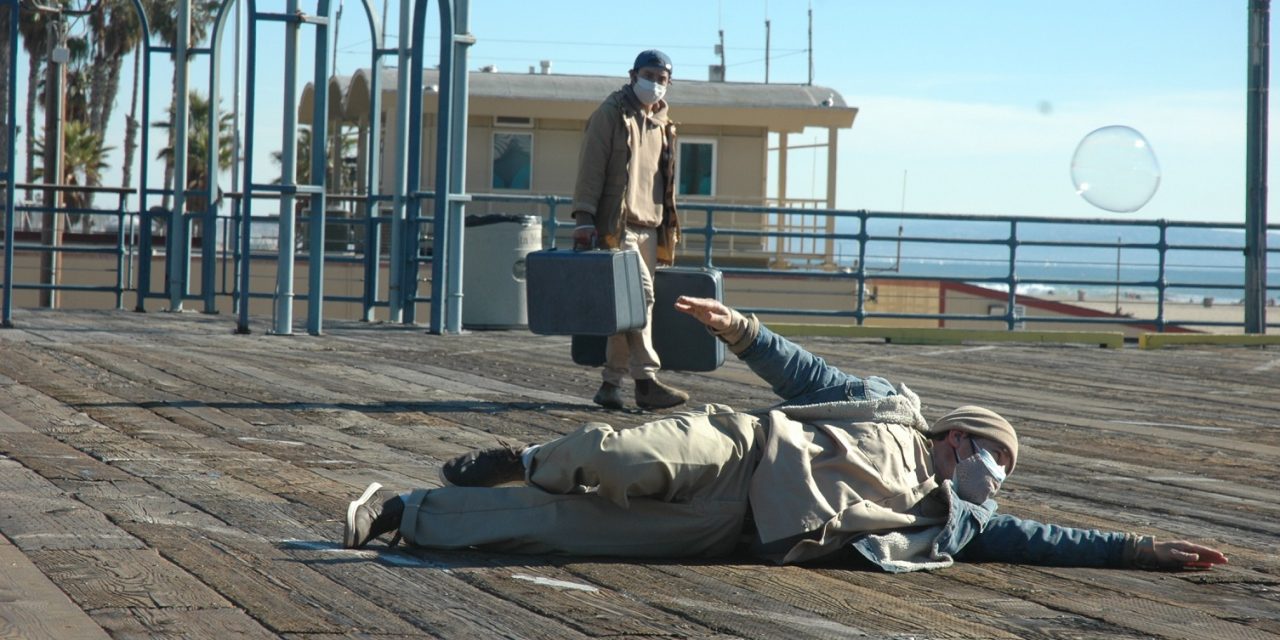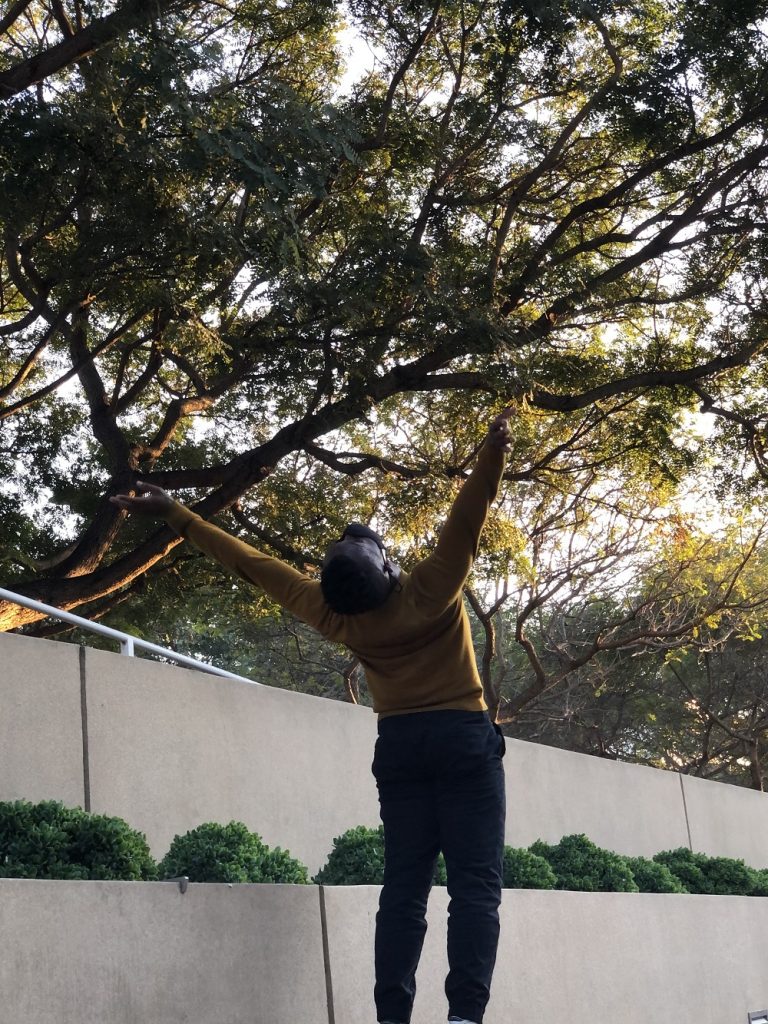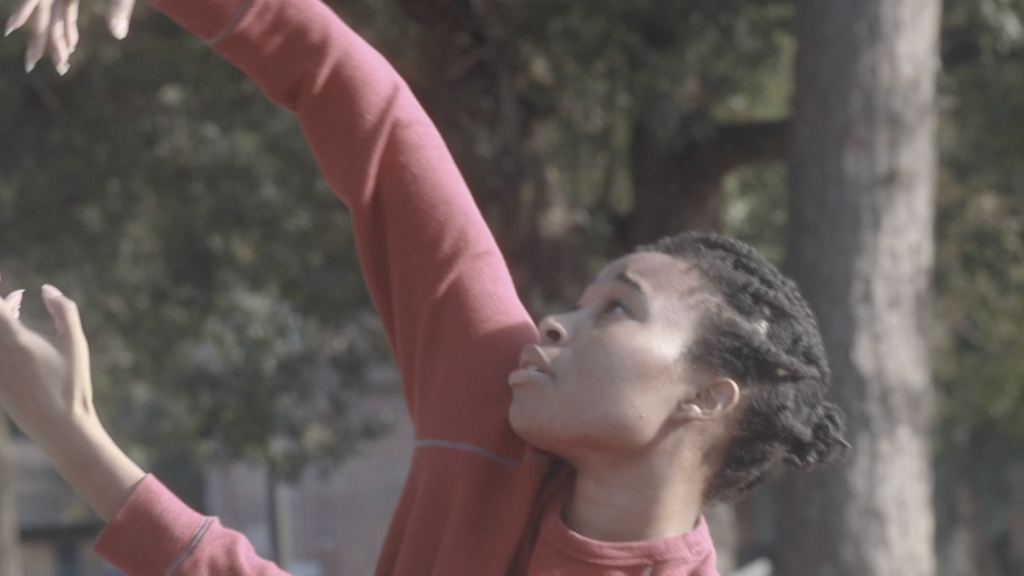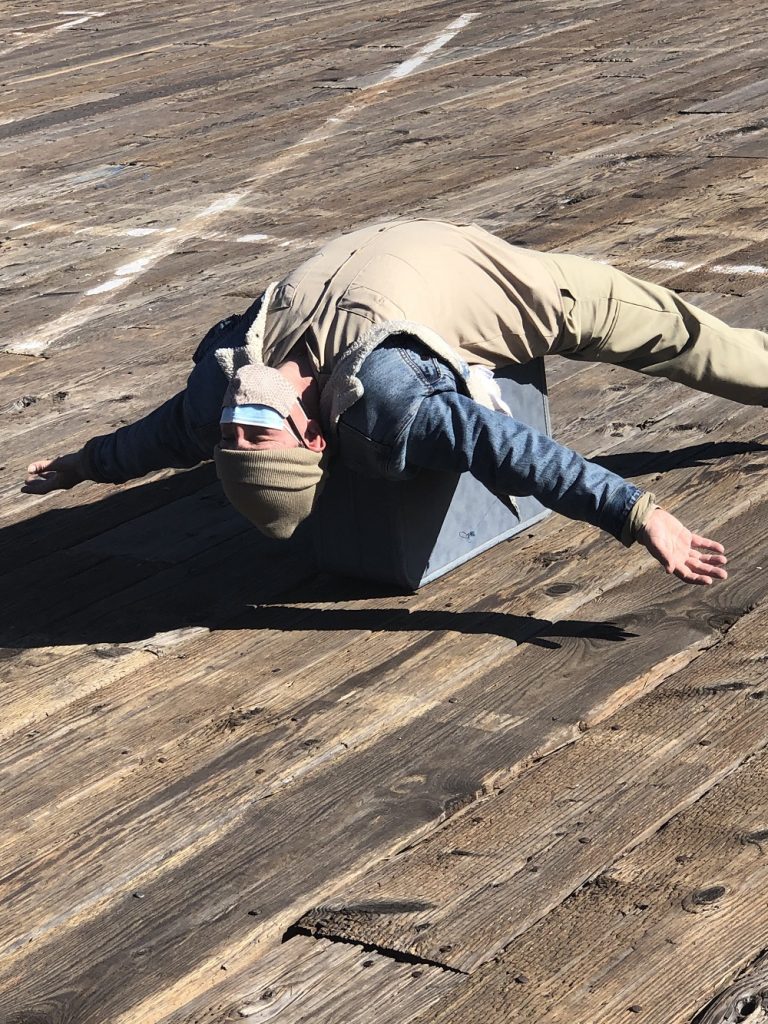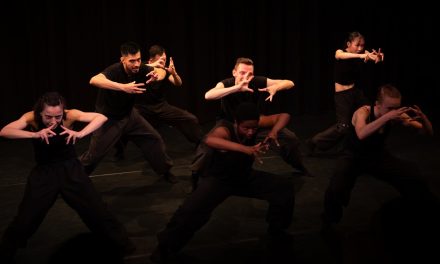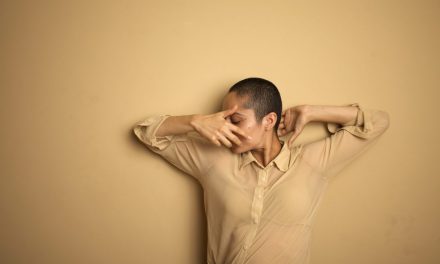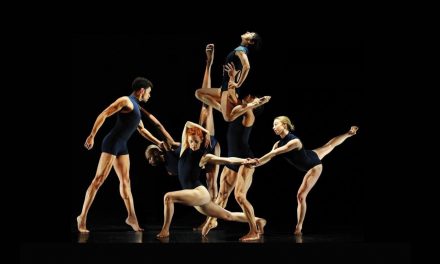On April 2, 2021 there was a presentation of Undanced Dances Through Prison Walls During a Pandemic, a film (produced by Dancing Through Prison Walls, Sming Sming Books and Critical Resistance) premiering six short dances choreographed via correspondence by four men incarcerated at the California Rehabilitation Center, a medium-security state men’s prison in Norco, California. These dances were the product of work begun in 2016 by choreographer, educator (Scripps College) and social activist Suchi Branfman. Branfman collaborated with dancer and cinematographer Tom Tsai to film these dances interpreted from text written by Terry Sakamoto, Jr., Brandon Alexander, Landon Reynolds, and Richie Martinez. The choreographers/interpreters/performers of the dance works featured Irvin Gonzalez, Tom Tsai, Bernard Brown, Kenji Igus, Brianna Mims, and Jay Carlon & Richie Martinez, with narrators Marc Antoni Charcas, Ernst Fenelon Jr., Romarilyn Ralston, and Richie Martinez. These artists styles include hip hop, tap, breaking, performance art, quebradita, spoken word, Butoh and contemporary dance forms. Undanced Dances Through Prison Walls During a Pandemic will air again FREE on April 16th at 6:30 p.m. produced by 18th Street Arts Complex.
It has been wonderful to have been an observer of Branfman’s project which was originally called Dancing Through Prison Walls. For five years Branfman has been taking dancers into Norco to work with incarcerated men creating what she describes as “a critical dialogue about freedom, confinement, and ways for surviving restriction, limitations, and denial of liberty through the act of dancing”. At Norco, Branfman would direct the men to create dances which her assistants learned and later performed on the outside. It was a beautiful, unique and important way for these men to have their voices heard and to let people know that they were still here.
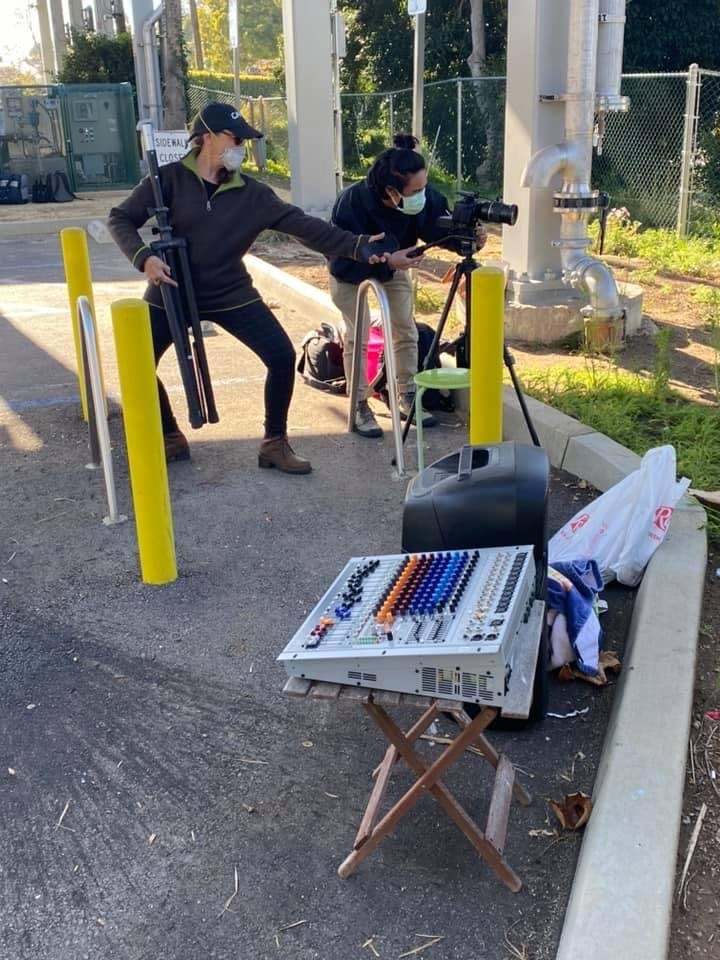
(L to R) Suchi Branfman, Director/Producer and Tom Tsai, Cinematographer/Editor on the set – Photo by Irvin Gonzalez
As with so many valuable endeavors, the in-person visits were cancelled in March of 2020, when the California state prison system shut down programming and visitation due to Covid-19. Branfman refused to abandon these men and very quickly reimagined the project to consist of their sending out dances written on paper, often created while in their cells. It was important to these men and to Branfman that these works were presented to the outside world. The dances collected through this process between March and May of 2020 were then interpreted by the choreographers and the project became known as Undanced Dances Through Prison Walls During a Pandemic.
Choreography by correspondence is not new but it has not been used much for many years. While living in Paris during the early 1970s, dancer, choreographer and artist Remy Charlip created a work titled Instructions from Paris, the first of his Air Mail Dances , for Nancy Lewis. For a Department of Dance faculty concert in 1985 at California State University, Long Beach, Tryntje Shapli and I had the honor of creating a duet from one of Charlip’s Air Mail Dances. He sent us a series of drawings of a dancer in different positions on a small set of stairs. Shapli and I created two solos to be performed simultaneously with the back of the stairs placed together to form a kind of pyramid.
Three of the six dances were choreographed/authored by Terry Sakamoto, Jr., a man who has an incredible natural gift for making his imagination come alive through text, and I will speak to them first. No longer incarcerated, Sakamoto was present at the discussion and Q&A that following the screening of the film. His first work was titled “Safety and Security” Two Nations’ Borders during which he describes the complex journey along Highway 111 that his wife had to take each time she went to visit him at Norco. Sakamoto’s text also included her fears and emotions which Choreographic Interpreter/Performer Irvin Gonzalez strongly captured through a movement vocabulary of street and contemporary dance. The journey along Highway 111 was visualized by Narrator Marc Antoni Charcas with blue masking tape along a cinderblock wall behind Gonzalez. Gonzalez’s performance was strong. Alfonso Cervera created the sound score of Chancha Via Circuito – Ilaló (Ft. Mateo Kingman) and singer/song writer Dan Vasc’s cover of Puccini’s aria Nessun Dorma. The film of “Safety and Security” Two Nations’ Borders has a video overlay by Mr. Awesomeburst titled “Crossing the Border to Tijuana”.
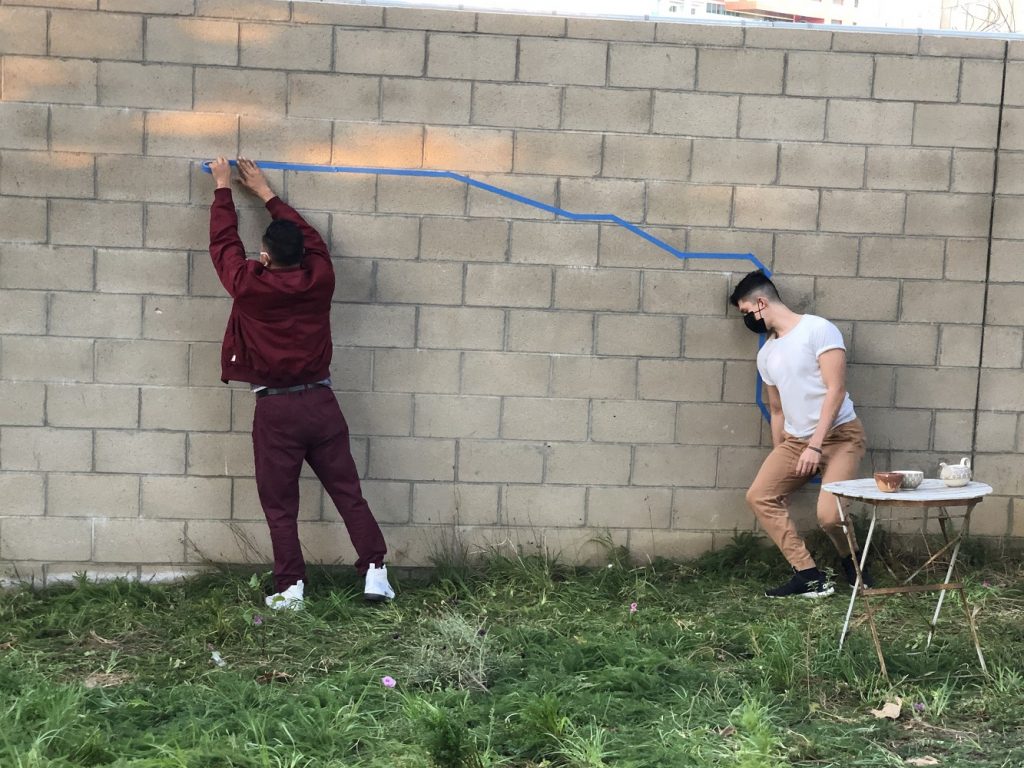
(L to R) Marc Antoni Charcas, Irvin Gonzalez in “Safety and Security” Two Nations’ Borders choreography by Terry Sakamoto, Jr. – Photo by Suchi Branfman
Sakamoto’s second film, The Mountain, was interpreted and performed by the amazing Bernard Brown with Romarilyn Ralston giving a powerful narration of Sakamoto’s text. The words spoke to a normally active man coping with an aging or inactive body working through the pain and finding the ability to fly. Brown shared that this work resonated so strongly because he has a female family member who is currently incarcerated and that he hoped that she would find a similar method of finding freedom inside. Ralston, who earned a master’s in arts degree in Liberal Arts at Washington University in St. Louis and bachelor’s in arts degree in Gender & Feminist Studies at Pitzer College, and who is the Program Director of Project Rebound at CSU, Fullerton was also formerly incarcerated.
A Solo was Sakamoto’s third work performed beautifully by Interpreter/Performer Brianna Mims, an artist, abolitionist, and facilitator based in Los Angeles, CA. Ralston again provided a commanding narration of Sakamoto’s desire “to fly, reach for the sun, and to touch the moon” as he remained incarcerated. Mims stated later that Sakamoto’s words felt like instructions, but her interpretation was far from academic as she lost herself in the movement to give beauty to his text. The cameraperson for A Solo was Devon Singletary.
Tom Tsai, Choreographic Interpreter/performer and Ernst Fenelon Jr. as the Narrator gave incredible performances in Brandon Alexander’s extraordinarily vivid Internal Battle: Negative and Positive. Demonstrating his talent and agility as a Hip Hop artist, Tsai physically and emotionally takes us through what at first appears to be a Hip Hop battle with an invisible opponent, but via Alexander’s words we learn is instead an internal struggle with himself. This was one of the strongest of the six films because of the combination of these three men. The camerapeople were Leonardo Rivas and Selina Ho.
Side note: Internal Battle: Negative and Positive was filmed on the rooftop of a police station, a building which Fenelon explained as a place where the incarcerated are used to be taken to in handcuffs.
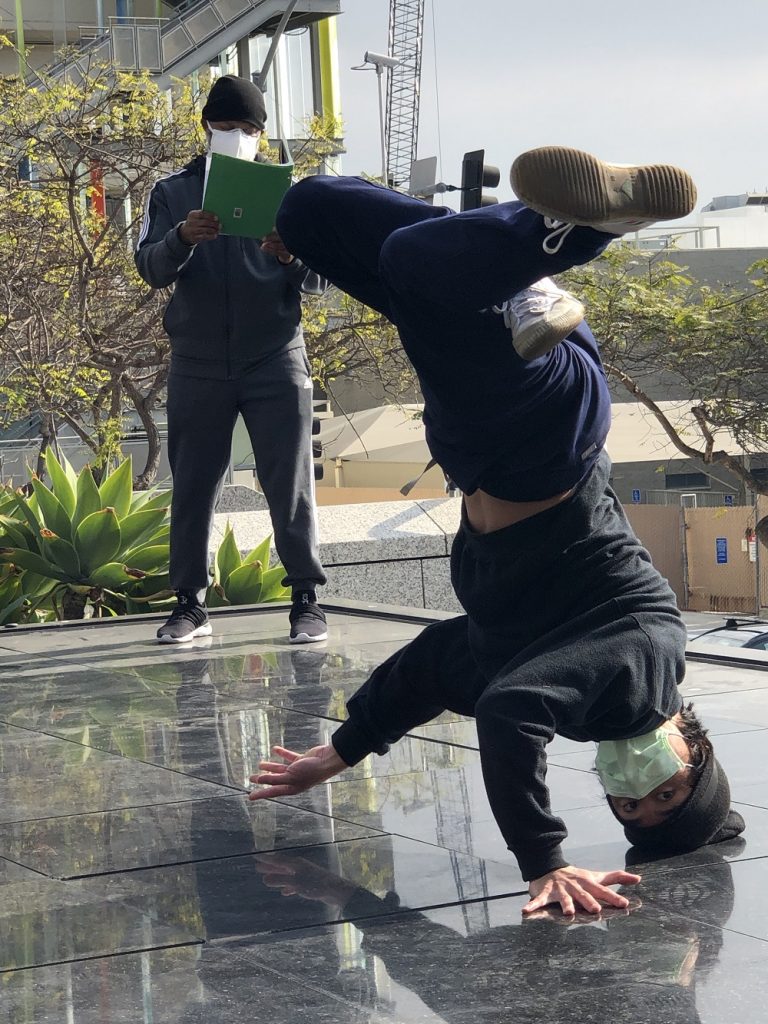
Ernst Fenelon, Jr. (Standing), Tom Tsai (Dancing) in “Internal Battle: Negative and Positive” choreography by Brandon Alexander – Photo by Suchi Branfman
Tap dancer Kenji Igus was the Choreographic Interpreter/Performer in Mapping a Journey to Visit Me by Choreographer/Author Landon Reynolds. Performing on a small wooden tap floor in the middle of a wide sidewalk lined with trees, Igus’ footwork audibly gave voice to Reynolds story about the emotions felt by both the incarcerated and the loved one on visiting day. As the anxiety level increased so did the speed of Igus’ taps and somehow he made it possible to hear romance in the air. Ernst Fenelon, Jr. was equally brilliant with his narration.
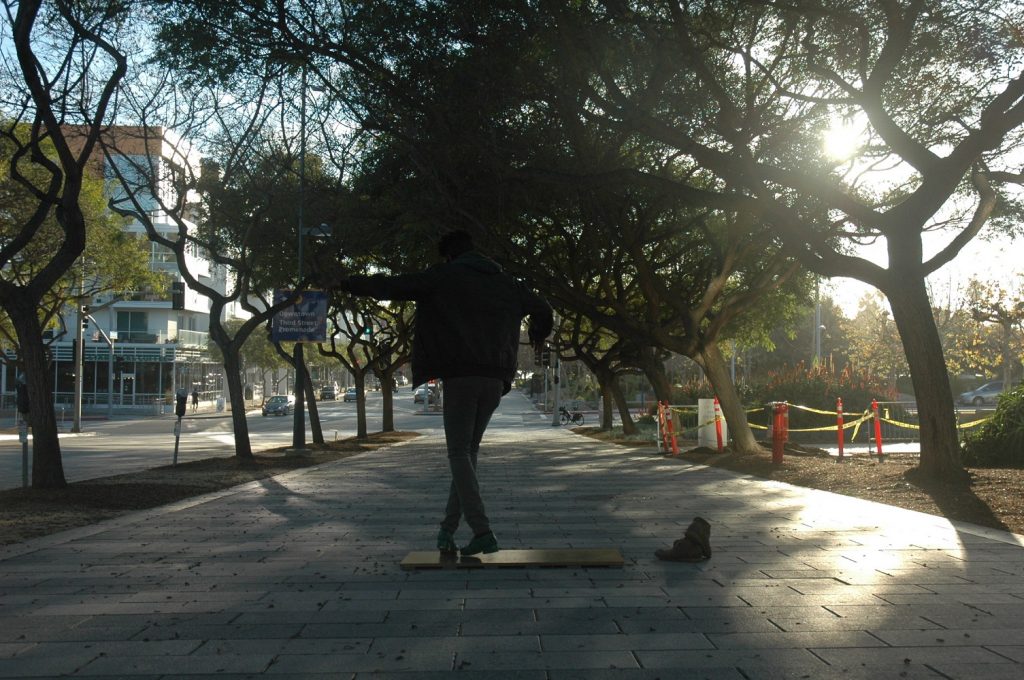
Kenji Igus in “Mapping a Journey to Visit Me” choreography by Landon Reynolds – Photo by Suchi Branfman
The film ended with the powerful Richie’s Disappearing Act authored by Richie Martinez and interpreted by dancer, choreographer Jay Carlon, and Martinez who also gave voice to this text. Through his prose, Martinez takes us though a numerous ways his mind helped him to disappear from inside the confines of prison to imagine himself on the outside. Filmed on an oceanside boardwalk, Carlon and Martinez carry and perform with a set of blue suitcases that aid the viewer to imagine Martinez freely traveling to all the places he wanted to go. The suitcase became a surfboard riding the waves and horse ridden by a Martinez the cowboy. We hear how certain scents and songs would trigger fond memories for Martinez and in his mind, he would disappear and travel back in time. We also hear how Martinez was able to disappear into a better place during the Monday night dance classes with Branfman.
Carlon is a wonderful dancer and performer, and his choreography is a fine tribute to Martinez’s written dance. Martinez was not in Carlon’s original choreography, but when he was just recently released from Norco Carlon invited Martinez to perform in his own dance. It was truly inspiring to watch. Richie’s Disappearing Act was inspired by Prison Renaissance’s Ways of Disappearing Project at San Quentin Prison. The music was by Alexander Kaye of akay.world.
Taking in Undanced Dances Through Prison Walls During a Pandemic, listening to the author’s talk about their time working with Branfman, witnessing the talent that these men and women have provides more evidence that placing people in cages is not the solution. These are human beings with talents, emotions, feelings and loves just like the rest of us, but who have made wrong choices or who were dealt a bad hand along the way. There is so much potential that was not or has not been tapped sitting idle and being wasted behind the walls of America’s thousands of jails and prisons. There are approximately 2.5 million people incarcerated in America and right now nearly 50,000 of them have contracted COVID-19 with hundreds of them dying.
The Artistic Director for Undanced Dances Through Prison Walls During a Pandemic was Suchi Branfman; Cinematographer/Editor: Tom Tsai, Production Facilitator: Selina Ho, Audio Recording: Evan Nachtrieb, Sound Advisor: Ross Levinson, and Social Media Consultant: Zach Ozma.
In December 2020, Undanced Dances Through Prison Walls During a Pandemic was published by the inimitable Sming Sming Books. Benefiting the authors, Critical Resistance and California Coalition for Women Prisoners, the 2nd edition of the sold out book is forthcoming. To learn more, click HERE.
Produced by 18th Street Arts Complex, Undanced Dances Through Prison Walls During a Pandemic will air again FREE on April 16th at 6:30 p.m. For more information, click HERE.
To contact Dancing Through Prison Walls: dancingthroughprisonwalls@
Branfman has provided the following resources for those who wish to find out more about what is going on in America’s penal system and how to help end mass incarceration.
TO SHOW SUPPORT:
California Coalition for Women Prisoners
Written by Jeff Slayton for LA Dance Chronicle.
Featured Image: Jay Carlon (foreground), Richie Martinez in “Richie’s Disappearing Act” – Photo courtesy of Dancing Through Prison Walls

